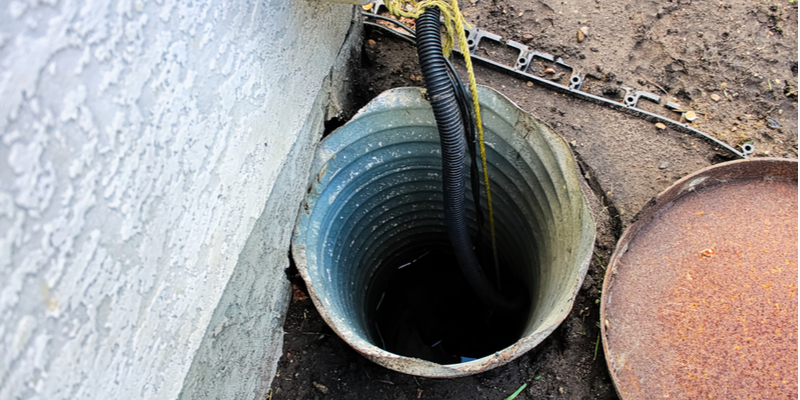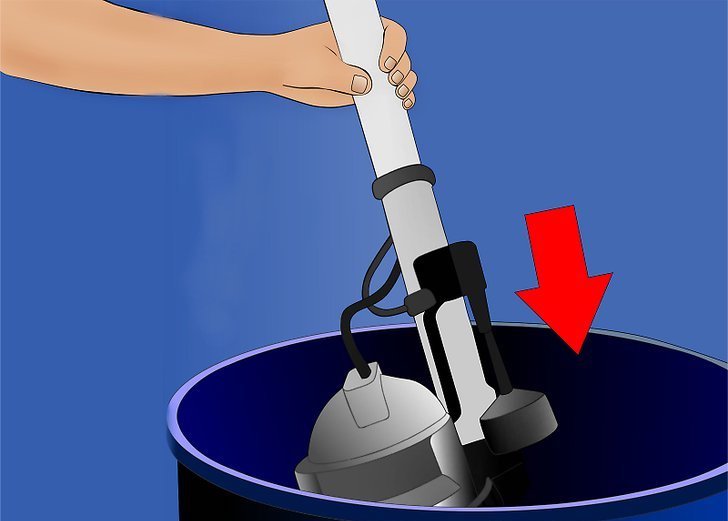Proven Solutions for Caring for a Sump Pump
Proven Solutions for Caring for a Sump Pump
Blog Article
We have noticed this post pertaining to Keep Your Sump Pump Clean, It'll Keep You Dry down the page on the internet and reckoned it made perfect sense to discuss it with you on this page.

Sump pumps are essential components in many homes, particularly in locations vulnerable to flooding or extreme moisture. They help stop water damages by successfully getting rid of excess water from basements or crawl spaces. Nonetheless, like any other home appliance, sump pumps need normal maintenance to ensure they function efficiently when needed the most. Cleaning your sump pump is a crucial part of its upkeep, and comprehending exactly how to do it properly can save you from expensive repair work and potential catastrophes.
Introduction
Maintaining a tidy sump pump is vital for its correct functioning and long life. Neglecting this vital job can cause blockages, malfunctions, and eventually, water damage to your building. Therefore, discovering how to clean a sump pump is critical for property owners that rely upon these tools to keep their cellars completely dry and safeguarded.
Understanding the Sump Pump
Prior to diving into the cleansing procedure, it's important to have a basic understanding of just how a sump pump functions. Normally mounted in a pit or container below the cellar flooring, a sump pump includes several vital parts, consisting of a pump, a float button, and a discharge pipe. When water collects in the pit, the float button triggers the pump, which after that pumps the water out via the discharge pipe, away from the building's structure.
Indications of a Dirty Sump Pump
Understanding when your sump pump needs cleaning is crucial for preventing potential breakdowns. Some common indications that indicate an unclean sump pump include strange noises throughout operation, decreased water circulation, and visible particles in the pit. If you observe any one of these signs and symptoms, it's important to clean your sump pump immediately to avoid any kind of more concerns.
Preparing for Cleaning
Before you begin cleansing your sump pump, it's vital to take some safety precautions. Begin by turning off the power to the pump to avoid any kind of electrical mishaps. In addition, use proper safety equipment, such as gloves and safety glasses, to shield on your own from dust, particles, and prospective pathogens.
Detailed Guide to Cleaning a Sump Pump
Turning off the Power
Begin by separating the power supply to the sump pump to prevent any kind of mishaps while cleaning.
Removing Debris and Dirt
Make use of a pail or a scoop to remove any type of noticeable particles, dirt, or sediment from the sump pit. Dispose of the debris effectively to prevent it from clogging the pump or the discharge pipe.
Cleaning up the Pump and Float Switch Over
Once the pit is clear of debris, very carefully get rid of the pump from the pit. Check the pump and the float switch for any type of indicators of damage or wear. Use a soft brush or towel to clean up the surface areas and remove any kind of gathered gunk.
Purging the System
After cleaning up the pump and float switch, purge the sump pit with tidy water to eliminate any kind of remaining dirt or debris. This will certainly help make certain that the pump operates smoothly and effectively.
Looking For Correct Functioning
Before reinstalling the pump, execute a fast examination to make certain that the float switch triggers the pump correctly. Put some water right into the sump pit and observe the pump's operation. If whatever is working correctly, you can reconstruct the pump and reconnect the power supply.
Upkeep Tips to Maintain Your Sump Pump Clean
In addition to periodic cleansing, there are numerous upkeep pointers you can comply with to keep your sump pump in optimal problem:
Verdict
Cleaning your sump pump is a crucial aspect of its maintenance and ensures that it operates successfully when you need it the most. By complying with the steps detailed in this guide and including routine maintenance into your routine, you can extend the lifespan of your sump pump and shield your home from water damage.
6 STEPS ON HOW TO CLEAN A SUMP PUMP PROPERLY
UNDERSTANDING SUMP PUMPS
Your sump pump plays a crucial role in protecting your home by managing and removing excess water. It primarily functions as a “shield”, guarding your basement against the damaging effects of water accumulation. The pump is housed in a sump pit in the lowest part of your basement, and its job is to pump out any water that collects there.
During heavy rainfalls or when snow melts rapidly, water can infiltrate your basement, posing potential risks like flooding, structural damage, and harmful mold growth. Here, the sump pump springs into action, pumping out the intruding water and directing it away from your home.
SAFETY FIRST
Before cleaning, remember to prioritize safety. Disconnect the sump pump from the power source to prevent any accidental electric shocks. Also, wear sturdy gloves to protect your hands from any sharp or dirty components within the pump.
REMOVE THE SUMP PUMP
After ensuring your safety, the next step is to remove the sump pump from its pit. Doing this might require careful maneuvering as you don’t want to damage any pump components. Once removed, clean the sump pit to remove any accumulated debris or sludge.
INSPECT THE PUMP
Inspect the pump for any visible signs of wear or damage. Check the power cord, float switch, and impeller housing. If any components look worn out or damaged, consider replacing them to ensure optimal performance.
CLEAN THE PUMP
Thoroughly clean the pump with warm, soapy water. Make sure to rid it of any dirt, gravel, or other debris that might impede its performance. You can use a toothbrush to clean the small, hard-to-reach parts of the pump.
REINSTALL THE SUMP PUMP
Reinstall the pump into the sump pit Make sure it’s positioned correctly to remove the water effectively Once it’s back in place, reconnect it to the power source TEST THE PUMP
Finally, pour some water into the pit to ensure the pump works correctly. It should start automatically and begin pumping out the water; if it doesn’t, check the power source and the positioning of the pump.
Remember, while cleaning your sump pump is an essential part of home maintenance, hiring a professional plumber for a thorough inspection and cleaning at least once a year is also important. This will ensure that your pump is in optimal condition, ready to protect your home from potential water damage.
BEST PRACTICES FOR CLEANING SUMP PUMP DISCHARGE PIPES
Regular Inspection: Regularly inspect your discharge pipes, especially during heavy rainfall or snowmelt periods. Look for any signs of blockage or damage. Early detection of problems can prevent serious issues down the line. Periodic Cleaning: Over time, sediment and debris can accumulate in the discharge pipes, impeding the flow of water. Regular cleaning helps keep the pipes clear and functioning efficiently. You can use a high-pressure water jet to effectively clean the pipes. Insulation During Winter: In colder climates, discharge pipes can freeze, blocking the outflow of water. Protect your discharge pipes from freezing temperatures by insulating them with foam pipe insulation. This will ensure the sump pump can continue to discharge water even in freezing conditions. Proper Positioning: The discharge pipe should be positioned to direct water away from your home’s foundation. Improper positioning can lead to water seeping back into the basement. Ensure the pipe is long enough and angled correctly. Installation of a Check Valve: A check valve prevents water from flowing back into your sump pit after the pump has pushed it out. Installing a check valve helps maintain the efficiency of your sump pump and reduces the risk of flooding. Minimize Pipe Turns: Every curve or turn in the discharge pipe can decrease the efficiency of water flow. By minimizing turns and bends in your discharge pipe, you can increase the efficiency of your sump pump. https://www.fullspeedplumbing.com/how-to-clean-a-sump-pump-properly9999/

Do you appreciate reading up on Steps to Cleaning Your Sump Pump Properly? Try to leave a remark down the page. We would be delighted to find out your suggestions about this content. Hoping that you visit us again later on. Sharing is good. Helping people is fun. Thanks a lot for being here. Return soon.
Click Here To Find Out More Report this page